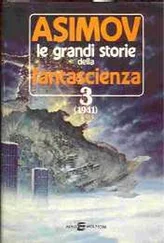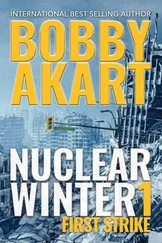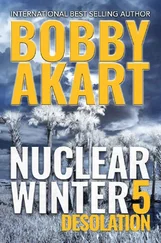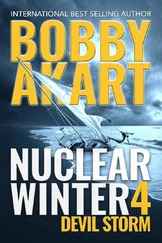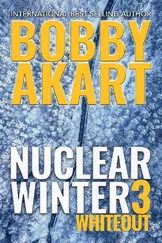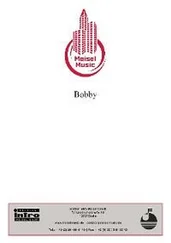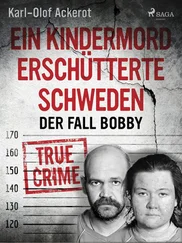He made his way to the pharmacy windows. As expected, the counters identified as drop off and pick up were secured with a mechanical, cagelike door that locked in place. He walked past the pickup counter to the small room adjacent to the pharmacy, marked Consultation . This space could be accessed by both patient and pharmacist to discuss the medications being dispensed.
Peter took a deep breath and reared back and hit the glass insert on the door as hard as he could. All he accomplished was a jarring jolt to his shoulder, as the glass easily repelled the tire iron and knocked it from his hands.
“Dammit!” he shouted as pain shot through his upper body. He was still sore from the multiple tumbles he’d endured after his car stalled.
Peter stomped around out of frustration. He was certain this would be an access point into the pharmacy. He used his flashlight to inspect the surrounds of the pharmacy. His mind hearkened back to the Vitamin Shoppe at the mall.
He shined the light onto the ceiling. The front of the pharmacy was identified by a red, curved fascia clearly identifying the space to shoppers. After all, CVS was supposed to be a pharmacy and not the variety store it had become over the years. The fluorescent light fixtures were spread equidistant throughout the drop-ceiling panels. The panels ran through the entire pharmacy area, past the secured counters and outward toward the fascia.
He shouted to Jackie, “Are we still good?”
“So far!”
Peter pulled himself onto the drop-off counter by using an adjacent shelf full of cold remedies as a step. Once on the counter, he held onto the steel-grate screen to keep his balance. His head pressed against the drop ceiling. With his right hand, he pressed upward on the ceiling tile. With a little effort, it broke free of the grid and pushed upward.
Peter stepped onto the top of the elevated section of shelf that contained the cold and allergy medications. His upper body was now into the ceiling. He used his flashlight to light up the space.
“This is too easy,” he mumbled to himself. The steel-grate dividers acted as a deterrent to most. However, for the experienced burglar Peter had become, they were just window dressing.
He took a deep breath and pulled himself into the ceiling by grasping an iron water pipe that ran along the space. He pulled upward, and with a kick of both legs, he was able to wrap his arms around the pipe.
Peter didn’t have to go far to drop into the pharmacy. In less than a minute, he’d pulled himself above the ceiling tiles and kicked his way through into the pharmacy. He dropped his body inside, inadvertently kicking the flat-panel monitor off the countertop.
“Oops, sorry about that,” he said with a stifled laugh. Peter was full of himself. His overconfidence would prove to be a mistake that almost got him killed.
Sunday, October 27
Mount Weather Operations Center
Northern Virginia
“Why the hell can’t we do something!” the president shouted at the representatives of half a dozen agencies charged with the responsibility of rescuing and assisting Americans in their time of need. Between his lack of sleep and frustrations caused by an increasingly dire situation, President Helton was viewed as becoming unhinged.
“Sir,” the secretary of Homeland Security began to respond. He’d borne the brunt of the president’s tirades, as he oversaw so many agencies designed to meet the needs of those impacted the most during a catastrophic event. “The fact of the matter is nobody ever thought this would happen. Until the Cold War ended during the Reagan administration, nuclear Armageddon was on the forefront of everyone’s mind. Since then, we’ve allocated our resources elsewhere.”
The president lashed out, not at those in the room but at his predecessors. “And we’re paying a hefty price for that shortsightedness.”
“Mr. President, have you given any more thought to the power grid situation?” asked the FEMA administrator.
His reply was sarcastic, reflecting his mood. “Yeah, great idea. Kick the entire Western United States in the teeth while they kneel on the ground with their arms outstretched, praying for help and mercy. I may go down in history for a lot of things, but that isn’t going to be one of them.”
“I understand it’s coldhearted, Mr. President.” The FEMA administrator bravely pressed the subject. He was a native New Yorker, so he might have a bias in favor of the East Coast. “Sometimes, we have to consider unpopular decisions to serve the greater good. I can make an argument that our rebuilding effort will be more effective if at least half the nation is fully functioning.”
The president bristled, and he was about to give the FEMA head an earful when his chief of staff stepped in to diffuse the situation. “Sir, I don’t think it’s a decision that needs to be made at this particular moment. As I understand it, the rolling brownouts orchestrated by the power companies have proven to be effective at marshalling that asset, so to speak. May I suggest that each agency head continue to monitor how their sphere of influence is impacted by the issue?”
President Helton jutted out his chin and glared at the man from FEMA he’d inherited from the prior administration and never got around to replacing. Without saying a word, the conversation turned to the environmental impact. Representatives from the National Weather Service and NOAA, the National Oceanic and Atmospheric Administration, were present for the first time in the afternoon briefing.
“Mr. President, I’d like to bring your attention to the monitors at the far end of the room,” began the woman from NOAA.
He stood from his chair and approached the forty-eight-inch screen.
“You’re looking at an animated GIF generated from a series of images captured by NOAA’s Suomi NPP satellite.”
The Suomi National Polar-orbiting Partnership, or Suomi NPP, was designed to collect data on climate change and unusual weather patterns. Launched in 2011, it had been instrumental in studying the effect of Western United States wildfires on long-term climate-change models.
The NOAA scientist continued. “As you can see, this is time-lapse imagery of normal cloud cover being driven by the prevailing winds toward the West Coast. The bright flashes—here, here and here—represent the nuclear warheads detonating in SoCal, San Francisco, and Seattle.”
She paused while everyone took in the images before continuing. “After the mushroom clouds rose skyward, brown smoke began to billow and cascade into the Pacific Ocean. This smoke cloud has already traveled in a westward direction for approximately thirteen hundred miles, forcing the moist air contained in the clouds away from the U.S. mainland.
“As this continues over the coming weeks, this will create extreme drought conditions in some parts of the country, namely the Midwest and Southwestern states. These extreme conditions coupled with the fallout circumnavigating the Northern Hemisphere following the Indian-Pakistani nuclear conflict could result in an extended drought across America’s breadbasket.”
The president stared ahead, emotionless, his face appearing to be devoid of comprehension.
Chandler noticed his lack of response to the NOAA scientist’s statement and immediately jumped in with a question. “How long will this condition persist?”
“Which one, sir? The wind reversal or the heavy haze commonly referred to as nuclear winter?”
Chandler shrugged. “Both.”
“Mr. Chandler, because the moist air is driven back into the Pacific Ocean, the Santa Ana winds are not tempered. In other words, these strong, extremely dry downslope winds that originate inland will remain in place until the Pacific moisture displaces it. What we’re looking at is a massive Arctic high pressure in Canada generating cold, dry air masses for months on end. Coupled with the remnants of all three regional nuclear exchanges, we’re facing an event unimagined by all of our nuclear aftermath models.”
Читать дальше


